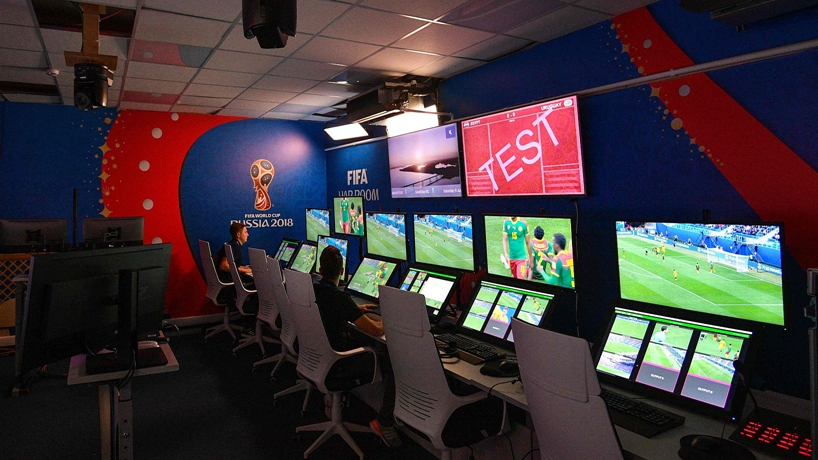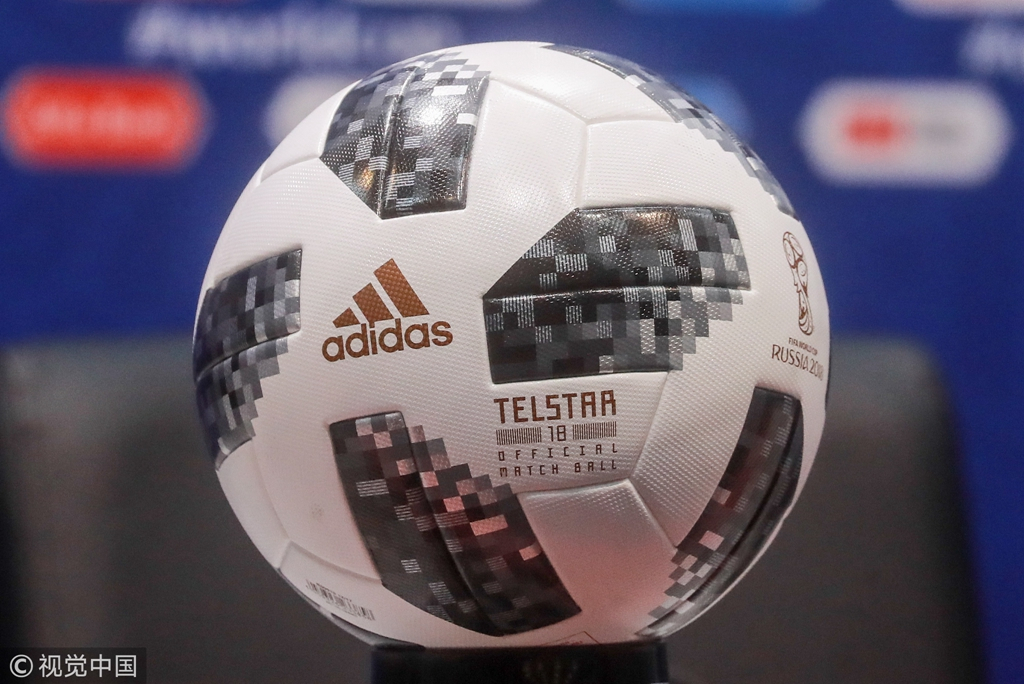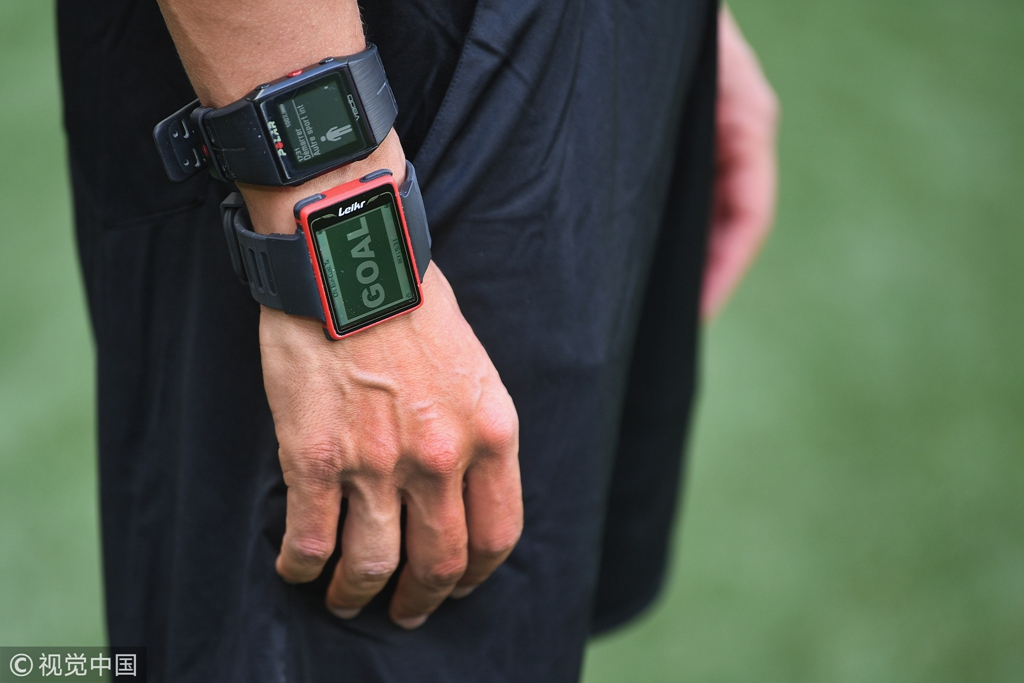
Tech & Sci
15:35, 15-Jun-2018
Three technologies that make the World Cup fairer
By Guo Meiping

The World Cup has long been plagued by criticism regarding cheating, unfair officiation, pitch violence and other irregularities.
The ambiguity of decisions made by referees is usually the main blasting fuse in these entanglements.
Three kinds of technologies are now in place in Russia that can provide assistance to human referees and are meant to bring greater fairness to the competition field.
Telstar, ball with NFC chip

Telstar 18, the 2018 FIFA World Cup official match ball. /VCG Photo
Telstar 18, the 2018 FIFA World Cup official match ball. /VCG Photo
FIFA revived the Telstar, the first made-for-television football used at the 1970 World Cup, last year in November.
FIFA described the so-called Telstar 18, made by German sportswear giants Adidas which has supplied the ball at every World Cup since 1970, as “a reinvention of a classic model with a brand-new panel design and the latest technology.”
The high-tech component of Telstar 18 is the NFC chip located on top of the ball.
NFC is a digital technology that allows two devices to exchange data, which we can usually find in POS machines, access cards and bus passes.
Once connected, users can get access to data such as motion trail and players' shooting habits in every match ball on their smart devices.
The NFC ball can provide more information on the field and help reduce mistakes by referees, giving greater accuracy to game outcomes.
Video Assistant Referee

A FIFA official checking monitors that will be used by video assistant referees at the FIFA World Cup in Russia. /VCG Photo
A FIFA official checking monitors that will be used by video assistant referees at the FIFA World Cup in Russia. /VCG Photo
The Video Assistant Referee (VAR) is a match official who monitors video footage of the game for incidents that the on-pitch referee and his assistant referees might have missed.
A VAR, one of 13 FIFA qualified referees, and three assistants will monitor each of the 64 matches at the World Cup from an operations room in Moscow.
They will have access to the pictures from 33 broadcast cameras as well as two cameras dedicated to aiding offside decisions.
The VAR will review decisions that include goals and offenses leading up to a goal, penalty decisions and offenses leading up to a penalty, direct red cards and cases of mistaken identity.
For some incidents, the referee will act on information from the VAR; in others, they will view the footage at pitch side.
This technology is being used at the World Cup for the first time in Russia.
Goal-line technology

The 4th official's GLT watch displays 'GOAL' during the test prior to the FIFA Confederations Cup Russia 2017 Group A match between Portugal and Mexico at Kazan Arena on June 18, 2017, in Kazan, Russia. /VCG Photo
The 4th official's GLT watch displays 'GOAL' during the test prior to the FIFA Confederations Cup Russia 2017 Group A match between Portugal and Mexico at Kazan Arena on June 18, 2017, in Kazan, Russia. /VCG Photo
Making its World Cup debut in 2014 in Brazil, the goal-line technology (GLT) can help referees decide whether a goal has been scored or not.
Provided by German company GoalControl this year, the technology involves 14 high-speed cameras, seven for each goal, to monitor moves of the ball.
According to FIFA, the GLT should not interfere with the game, and as such, only match officials receive a signal on their watches, in about one second, whether the entirety of the ball has crossed the goal line.
(Top photo via VCG)
(With input from Reuters)

SITEMAP
Copyright © 2018 CGTN. Beijing ICP prepared NO.16065310-3
Copyright © 2018 CGTN. Beijing ICP prepared NO.16065310-3